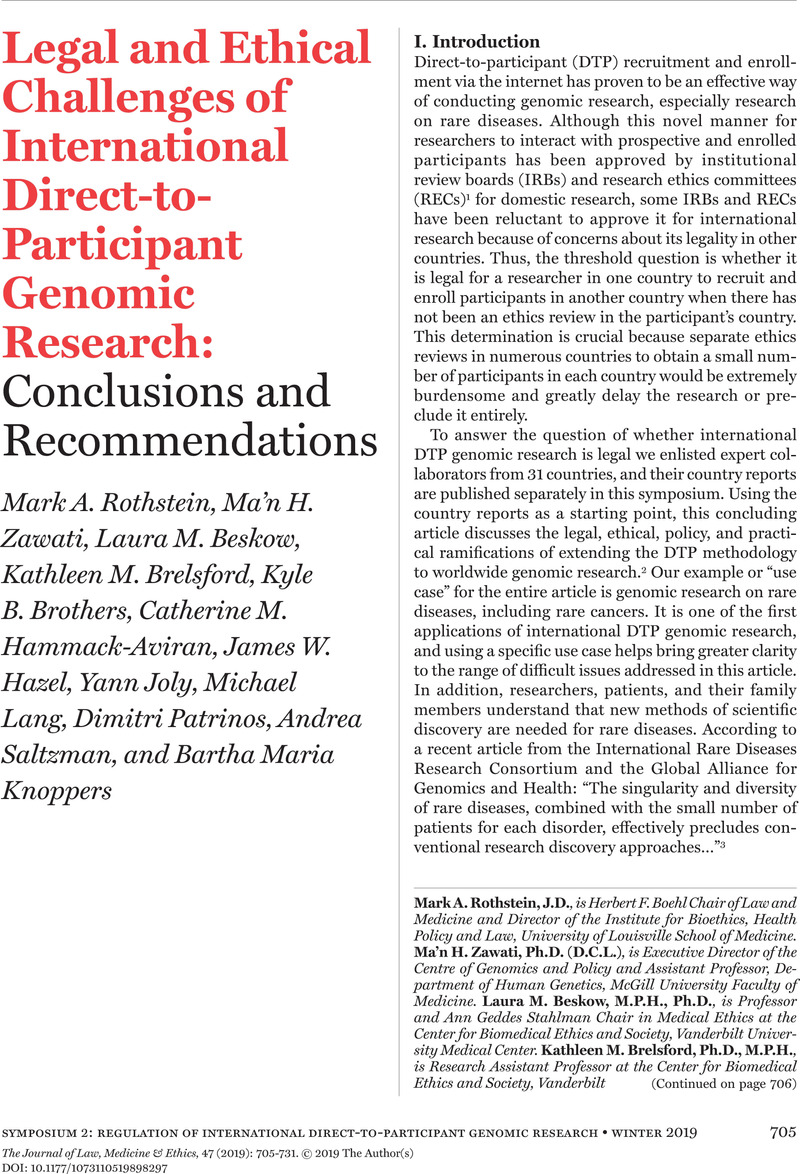Dziak, K. et al.,
“Variations among Institutional Review Board Reviews in a Multisite Health Services Research Study,” Health Services Research 40, no.
1 (
2005):
279–
290;
Mansbach, J. et al., “Variation in Institutional Review Board Responses to a Standard, Observational, Pediatric Research Protocol,”
Academic Emergency Medicine 14, no. 4 (2007): 377-380;
McWilliams, R.,
Hoover-Fong, J., and
Hamosh, A., “Problematic Variation in Local Institutional Review of a Multicenter Genetic Epidemiology Study,”
Journal of the American Medical Association 290, no. 3 (2003): 360-366;
Ravina, B. et al., “Local Institutional Review Board Review of a Multicenter Trial: Local Costs without Local Context,”
Annals of Neurology 67, no. 2 (2010): 258-260;
Silverman, H.,
Hull, S.C., and
Sugarman, J., “Variability among Institutional Review Boards' Decisions within the Context of a Multicenter Trial,”
Critical Care Medicine 292, no. 2 (2001): 235-241;
Stair, T.O. et al., “Variation in Institutional Review Board Responses to a Standard Protocol for a Multicenter Clinical Trial,”
Academic Emergency Medicine 8, no. 6 (2001): 636-641;
Stark, A.R.,
Tyson, J.E., and
Hibberd, P.L., “Variation among Institutional Review Boards in Evaluating the Design of a Multicenter Randomized Trial,”
Journal of Perinatology 30, no. 3 (2010): 163-169;
Vick, C.C. et al., “Variation in Institutional Review Processes for a Multisite Observational Study,”
American Journal of Surgery 190, no. 5 (2005): 805-809.
CrossRefGoogle Scholar 


